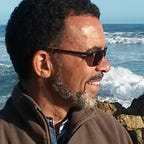A Call for Innovation in Coastal Land and Seascapes
David Obura 2020–02–29 02:09:36
The UN biodiversity report released in May 20191 classified the planet into 17 biomes, four of them being heavily transformed by humanity: cities, farmland, aquaculture areas, and altered parts of the coast. Arguably, the coastline faces anthropogenic changes more intensely than any other system. People and runoff from watersheds pour down to the shore while the sea surges up to it, and climatic changes shift the interactions between the atmosphere, ocean, land, and humans.
Importantly we don’t know how much coastline is in this highly altered state and the amount varies tremendously among countries. For example, in small urbanized countries such as Singapore nearly the entire shoreline has been transformed, whereas in large countries with remote coastlines such as Canada, only a minute proportion is no longer in a natural or near-natural state.
A key question for today is, what options do countries and coastal residents have for maintaining critical functions of coastal systems into the future? Can we maintain protection from cyclones and inundation by coastal habitats, preserve the provision of food in upwelling systems and coral reefs, and sequester carbon to limit climate change? We increasingly realize natural assets are near-irreplaceable, and certainly when considering their cost of replacement. Thus an urgent need for comprehensive planning and management of marine and coastal ecosystems and innovative solutions across the board.
Maintaining and restoring green and blue infrastructure combined with engineering solutions is undoubtedly needed. Still, key challenges include the scale at which these make a difference and their cost-benefit ratio. Is there a place for reef restoration that costs tens or hundreds of thousands of dollars per hectare if the fishery value is in the $1,000s per hectare? And can reefs extending along hundreds of kilometers of coastline of a developing country be meaningfully restored, and at this price?
Highlighted by plastics along beaches and in the ocean, waste management is another critical coastal challenge. Novel cleanup and recycling solutions are mushrooming, and attitudes are changing towards waste reduction alongside increased adoption of circular economy practices. But can we call it a success if we only clean up the ‘canary’ floating on the surface, but don’t address the perhaps more insidious pollution that dissolves in water or sinks to the bottom? With coastal cities projected to hold 50 percent and more of the world’s population in the coming decades, solutions to reduce impacts and restore coastal habitats will be even more necessary.
Fortunately, awareness of these problems and the need to resolve them is growing.
The Sustainable Development Goals take this challenge head-on. Current negotiation of new biodiversity targets will attempt to inspire and institutionalize the behavior change needed to halt losses to natural systems by 2030, and perhaps ‘bend the curve’ to positive gains by 2050. But it’s one thing to have global aspirational targets, and another to motivate meaningful and equitable action at individual actor levels — whether these are families, companies or even cities.
Are we on the cusp of a societal transformation?
Efforts to derive science-based targets are gathering apace with hopes they will help identify pathways for each entity to avoid and reduce their impacts, and offset the balance through real, meaningful restoration of natural systems2. These will look not just at biodiversity impacts but other ‘earth systems’ including nutrient cycling, climate regulation and others. To support this technical innovations we can’t yet imagine will be needed, but we should not doubt their possibility when we see how the internet has transformed global society and economy in just 20 years, and how renewable energies are gaining year on year!
Can we identify a ‘safe operating corridor’, and build the tools to navigate within it, into the future? The coastal zone will be among the critical biomes where people and nature will need to transform and rebuild, and where the need for innovative solutions may be higher than anywhere else on Earth.
David Obura is a Director of CORDIO East Africa, a Kenyan research organization focused on coral reefs of the Western Indian Ocean. From a foundation in coral reef resilience, David increasingly works to integrate conservation and development strands in ways that will be necessary for a sustainable future in Africa. David works through a number of global working groups, including the Earth Commission and the IUCN Coral Specialist Group.
Published by Technology Systems Corporation. View All Articles.
This page can be found at http://digital.ecomagazine.com/article/A+Call+for+Innovation+in+Coastal+Land+and+Seascapes/3617390/652185/article.html.
Originally published at http://digital.ecomagazine.com.
